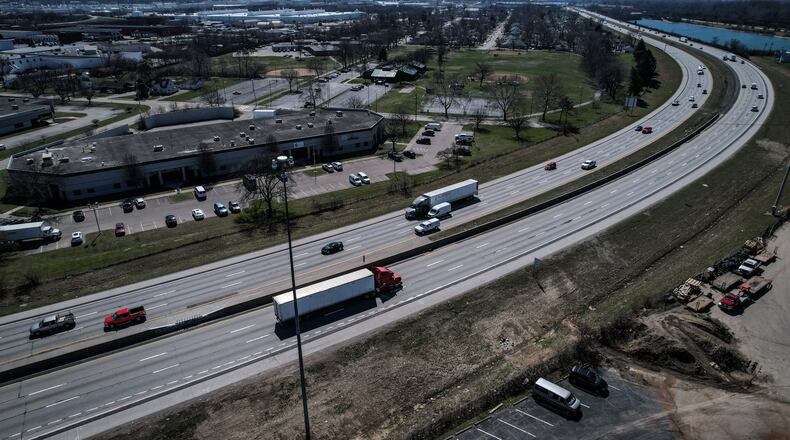In the next phase of a project that started last year, crews will completely reconstruct the 2.7 miles of highway from Exit 47 in West Carrollton to just north of Exit 50A (Dryden Road), taking the surface down to the base and replacing the existing pavement.
The Ohio Department of Transportation evaluates road surfaces using a Pavement Condition Rating system, looking at factors like rutting and cracking. ODOT planning engineer Ben Wiltheiss previously said this section of I-75 has seen “a much more rapid decline” than normal, as degrading base pavement makes surface fixes less effective.
“Obviously .. we always are doing everything we can to improve our transportation infrastructure for drivers,” said ODOT spokeswoman Mandi Dillon. “One of our big goals, too, is preserving what we have and taking care of the roadways we do have and making the needed improvements that we can on those roadways.”
Other pieces of the project
Traffic shift: I-75 will have multiple lane closures in both directions beginning Sunday night and going until April 21. Lane closures will be nightly from 7 p.m. to 7 a.m.
In that period, crews will work to shift one lane of northbound traffic onto the southbound side of I-75, which will allow this new traffic pattern to have three lanes of traffic in each direction, ODOT said.
Long ramp closure: On Dryden Road, the ramp from the road to I-75 north will be closed April 9 until July 2025 as part of the I-75 reconstruction plan. A detour will be set up from Dryden Road to Northlawn Avenue to Springboro Pike (Ohio 741) to I-75 north.
The 550-foot southbound deceleration ramp from I-75 to Dryden Road will be extended approximately 100 feet in 2024.
Better median barrier: A nearly 1-mile portion of older “Jersey” shaped median barrier from Edwin C. Moses Boulevard to Ohio 741 will be replaced. The new barrier will have single slope shape, which improves how vehicles are redirected to the roadway, officials have said.
The new barrier also will be taller to help negate the glare of the headlights of oncoming traffic, officials said.
Other changes: Various bridges in the area will get minor deck patching between this year and 2025, with most of the northbound work occurring this year and southbound work occurring in 2024, with all aspects completed by fall 2025, Dillon said.
Storm sewer facilities, lighting, signage and related components within the corridor will be replaced and upgraded as needed, Dillon said. Some of that work started in 2022 and will be completed throughout various phases through fall 2025.
Project cost explained
An initial $20 million figure for the project reported by this news outlet in April 2021 was “a planning level estimate,” Dillon said.
“As we moved into detail design, the figure increased due to additional work being added and quantities being more refined as the design was finalized,” she said. “We added the (cost of) reconstruction of the median barrier wall, lighting, drainage structures, and added the resurfacing of the northern portion of the project.
That northern portion, resurfacing of 1.5 miles between Stewart Street and Ohio 741, was originally part of the bridge replacement project, but ODOT moved it to this project so that the brand new pavement would not be scarred with work zone traffic markings, Dillon said.
The increase was also influenced by inflation and gas/oil price increases, she said.
“The major cost of this project is asphalt, which is very dependent on the oil market, along with trucking costs,” Dillon said. “The district has seen an increase in the price per cubic foot of asphalt of approximately 30% to 40% in all our resurfacing-type projects throughout the district, and this one was no different.”
Credit: JIM NOELKER
Credit: JIM NOELKER
About the Author



